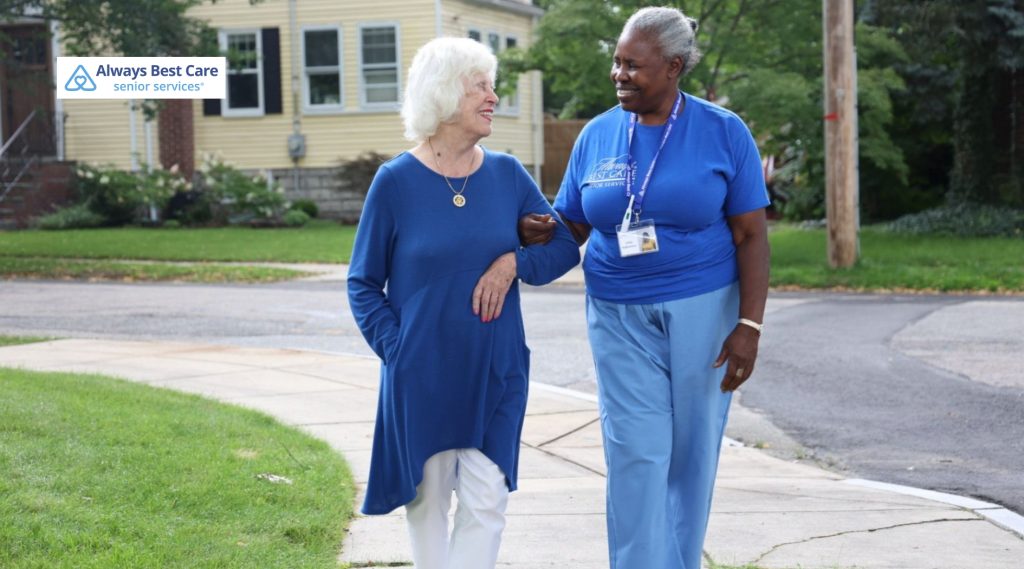Signs It Might Be Time to Consider Hospice Care in Longview, TX

Facing the decline of someone dear is never easy, and let’s be honest, it’s downright gut-wrenching at times.
At Always Best Care of Longview, we know that talking about hospice care can feel overwhelming, like stepping into uncharted territory.
But choosing hospice doesn’t mean giving up hope; it’s about shifting the focus to comfort, dignity, and making every day count. So, how do you know when it’s time to start this conversation?
What you will learn:
- The key signs that may indicate it’s time to consider hospice care for your loved one, including physical, emotional, and behavioral clues.
- How hospice care can offer more support, focusing on pain management, comfort, and providing emotional and spiritual guidance for both patients and families.
- Tips for starting the conversation about hospice care, including how to approach your loved one with sensitivity and involve their doctor for clarity.
- The benefits of hospice care and why it can improve quality of life by reducing stress and pain, even when aggressive treatments are no longer an option.
Table of Contents
Recognizing the Signs: When Hospice Care May Be Needed
No two journeys are exactly alike, but there are some telltale signs that may indicate it’s time to think about hospice care for your loved one.
Physical Clues You Shouldn’t Ignore
- Frequent hospital visits: If trips to the ER are becoming a regular part of life, it might be time to consider another approach.
- Rapid weight loss: When pounds are slipping away without improvement, it’s a red flag.
- Trouble breathing: Struggling to catch their breath, even at rest, or a reliance on oxygen can signal serious decline.
- Uncontrolled pain: If pain meds aren’t doing the trick, comfort could be slipping out of reach.
- Recurring infections: Slow healing and repeated infections are signs that the body is having a tough time bouncing back.
- Reduced mobility: Needing help for simple moves, getting out of bed, walking, or moving between rooms, can mean the illness is progressing.
- Difficulty with daily tasks: If things like bathing, eating, or dressing are becoming impossible without help, it’s time to pause and reassess.

Emotional and Behavioral Changes
Physical symptoms aren’t the only clues. Emotional and behavioral shifts can speak volumes, too:
- Withdrawing from others: Preferring rest or sleep over visits and conversations.
- Loss of interest: Activities and hobbies that once brought joy no longer spark excitement.
- Heightened anxiety or sadness: Emotional distress, including fear or confusion, can creep in as illness progresses.
- Changes in mental status: Confusion or disorientation may become more common.
Medical Considerations: What the Doctors Say
It’s not just what you see at home, sometimes the biggest indicator comes from the doctor’s office. Medical professionals may recommend hospice when:
- A terminal diagnosis has been made, with a prognosis of six months or less.
- Curative treatments have stopped, either because they aren’t working or the side effects are too much.
- The goal shifts to comfort, focusing on dignity and quality of life instead of aggressive treatments.
How Hospice Care in Longview, TX Can Help
Switching gears to hospice doesn’t mean less care, far from it. In fact, it often means more support and attention, tailored to what truly matters at this stage.
What Always Best Care of Longview Offers
- Pain and symptom management: Keeping discomfort at bay, day or night.
- Emotional and spiritual support: For both patients and their families, because everyone needs a shoulder sometimes.
- 24/7 support: Got a question at 2 a.m.? We’re here.
- Respite care: Family caregivers need breaks, too, no guilt, just rest.
- Guidance and planning: End-of-life decisions are tough, but you don’t have to go it alone.

Starting the Conversation: Tips for Families
Bringing up hospice care with a loved one can feel like tiptoeing through a minefield. Here’s how to keep the conversation as gentle as possible:
- Pick a quiet, comfortable moment, no distractions or interruptions.
- Listen more than you talk. Let your loved one share their fears and hopes.
- Use kind, clear language. Focus on comfort, not just medical facts.
- Loop in the doctor. Sometimes, hearing it from a trusted medical voice brings clarity.
When’s the Right Time to Make a Move?
Dragging your feet can mean missing out on time filled with more comfort, peace, and, dare we say it, a few more good memories.
If you’re noticing more than one of the signs above, it’s worth having the hospice conversation sooner rather than later.
Remember, hospice care doesn’t speed up the end; studies suggest it can even add days by reducing stress and pain. Most importantly, it puts quality back in the driver’s seat.

FAQ: Hospice Care in Longview, TX
Q: Does choosing hospice mean my loved one is giving up?
No, hospice is about focusing on comfort, dignity, and making every day meaningful, not about giving up.
Q: Will hospice care at home in Longview, TX, be covered by insurance?
Yes, hospice is typically covered by Medicare, Medicaid, and most private insurance plans.
Q: How quickly can hospice care start with Always Best Care of Longview?
Care can often begin within hours, depending on urgency and need.
Q: Can hospice help the whole family, or just the patient?
Hospice supports both patients and their families, offering emotional, spiritual, and practical guidance every step of the way.
Q: What if I have questions in the middle of the night?
We’re on call 24/7. Don’t hesitate to reach out, no question is too small.
Ready to Make Every Moment Count? Learn When It’s Time for Hospice Care.
Navigating a loved one’s declining health is never simple, but knowing the signs and understanding your options makes all the difference.
At Always Best Care of Longview, we’re by your side with compassionate care, honest advice, and unwavering support. Ready to talk about what’s next? Give us a call at 855-394-5521 we’re here to help you and your family every step of the way.





